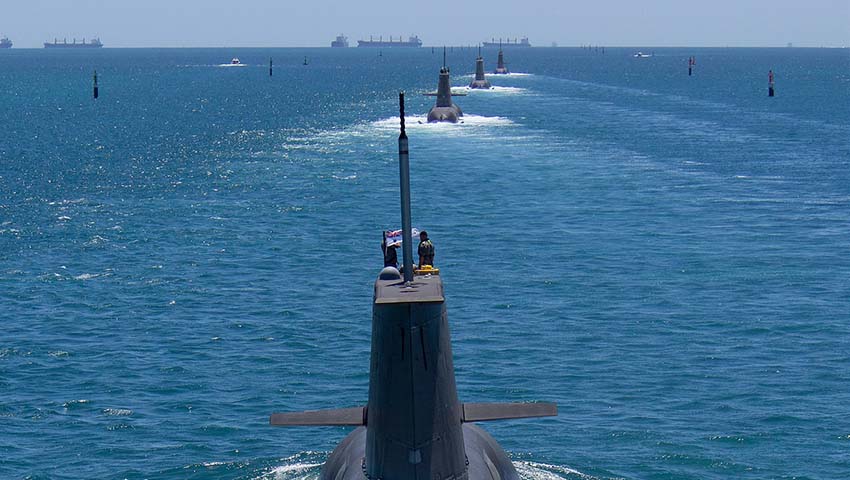It’s the sub story no one wants to hear – the coming end of the submarine era. But we must expect it, writes Roger Bradbury, emeritus professor of the Australian National University.
To continue reading the rest of this article, please log in.
Create free account to get unlimited news articles and more!
There is always an arms race between opposing weapons systems forcing each of them to evolve or die. Sometimes the evolution is gradual, like the replacement of wooden warships with ironclads in response to the growing lethality of naval gunnery in the 19th century.
At other times, there is just sudden extinction – the dominance of battleships lasted just a couple of decades, with the last major engagement between battleships being the Battle of Jutland in 1916. The invention of the torpedo made the battleship unviable as a weapon of war.
Whether a weapons system collapses with a whimper, like wooden warships, or a bang, like battleships, is primarily a function of the evolutionary flexibility of the system. If the system is a generalist one – like a traditional warship – then evolutionary pathways are likely available to it to adapt to the changing environment and survive.
However, if the system is highly specialised then there may not be evolutionary pathways to survival in a changing world. Battleships were highly specialised. They had one big trick – they could survive and fight through a long-range naval gunnery duel with other battleships because of their astonishingly heavy armour.
But they were no match for the newfangled small and fast destroyers armed with torpedoes.
Subs too have only one big trick. They are stealthy. But if, in a conflict, a sub can be detected, it is dead. As a result, over the last century there has been an arms race between subs seeking to become stealthier and their adversaries seeking to detect them. And for the last half-century at least, subs have become so stealthy that they have become one of the most lethal weapons systems available to any state.
Stealth, this highly specialised capability, may be coming to end as the technological environment of subs changes.
There is a huge and growing push of science and technology into sensing the oceans. This is being driven not only by military needs, but also by economic and environmental needs. And it is leading to a considered view that the oceans will become ‘transparent’ over the coming decades.
A transparent ocean will be the result of a coming integration of sensing systems not yet developed, and it is likely to come together, when it does, quickly. The submarine era will likely end with a bang not a whimper.
Subs will remain highly effective and lethal weapons systems until, because stealth – their one big trick – no longer works, they suddenly aren’t.
But when will that be? This is a first-order strategic question. And I recently led a group of scientists and technologists at the ANU to attempt to answer it.
We had a wide range of skills and experience in ocean science, nuclear science and materials science as well as in the technology of the high frontier – artificial intelligence, autonomous drones and battery technology.
Our time horizon was the 2050s, as the next generation of nuclear-armed submarines become deployed through the 2030s and beyond. Our analysis identified broad areas of future science and technology – rather than specific ‘hot’ areas of the moment – that might have an impact on submarine detection as well as on counter-detection.
Our analysis used the estimative intelligence software tool, Intelfuze, created by Australian AI specialists Houston We Have. It’s used in the intelligence community to provide probabilistic assessments that are rigorous, transparent, defensible, and able to be updated.
It is particularly suited for problems where the data are poor, uncertain and perhaps even speculative, and where there may be strongly divergent opinions on the quality and significance of those data. It was perfect for this problem, allowing us to focus on the science and avoid the arm-waving typical of so many futuring exercises.
Our assessments showed very clearly that the oceans are, in most circumstances, at least likely and, from some perspectives, very likely to become transparent by the 2050s.
Even allowing for a generous assumption of progress in counter-detection in our analyses, we cannot see how counter-detection can possibly be as effective in the 2050s as it is today. In simple terms, the submarine era will likely come to an end in the 2050s.
Roger Bradbury is emeritus professor of complex systems science at the Australian National University.

 Login
Login







